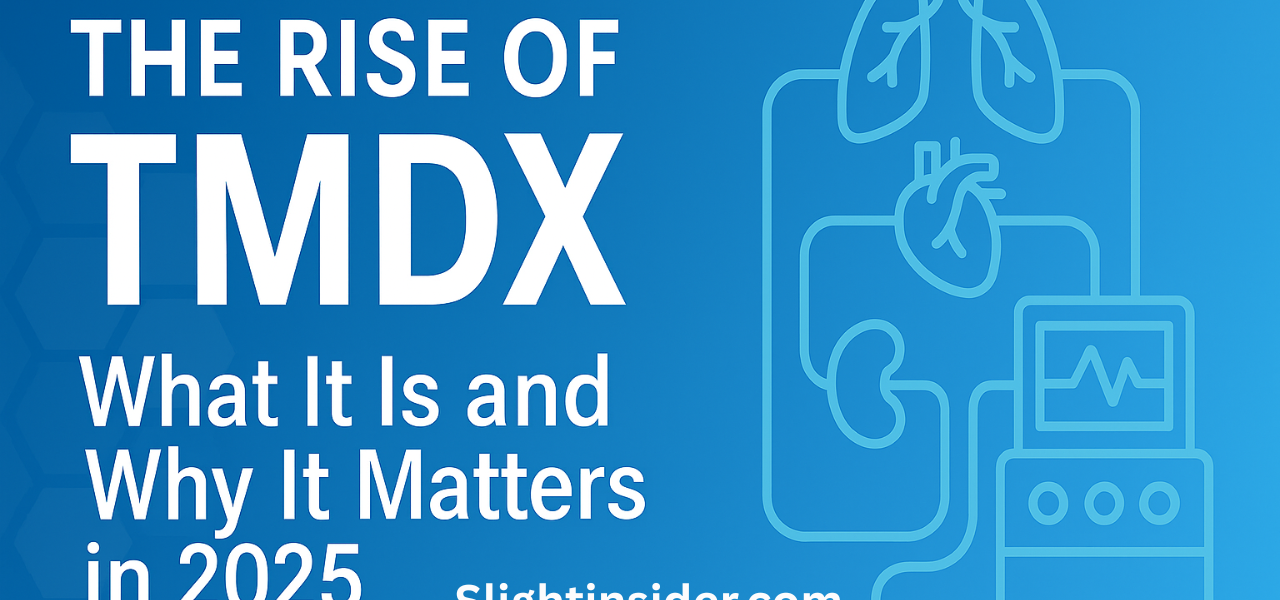In recent years, few innovations have garnered as much attention in the medical and biotechnology sectors as TMDX. As of 2025, TMDX is no longer just an acronym floating around investment circles and biotech conferences—it represents a transformative shift in how we perceive organ transplantation, patient outcomes, and the convergence of advanced medical technology with real-world application.
But what exactly is TMDX? Why has it seen such an explosive rise in relevance, and what does it mean for the future of healthcare and medical investment? Let’s dive deep into the world of TMDX to understand its impact, potential, and the critical role it plays in 2025 and beyond.
What is TMDX?
TMDX is the stock ticker symbol for TransMedics Group, Inc., a medical technology company that has pioneered a revolutionary organ care system designed to improve the transportation and viability of donor organs.
Traditionally, organ transplantation has relied on a cold-storage method that severely limits the window of time in which an organ remains viable. TransMedics, through its Organ Care System (OCS), has developed a “beating-heart” solution that preserves organs in a functioning state, allowing them to remain viable for much longer periods and resulting in higher transplant success rates.
The OCS mimics the environment of the human body, providing warm, oxygenated blood and nutrients to organs, which drastically reduces the risk of organ failure due to ischemia (lack of oxygen). This has changed the game for heart, lung, and liver transplants.
Why TMDX Matters in 2025
1. Revolutionizing Organ Transplantation
In 2025, over 100,000 patients in the U.S. are on waiting lists for organ transplants. The traditional cold storage method means that many organs go to waste simply because they can’t be transported or used in time. TMDX’s technology increases the number of viable organs, effectively saving more lives.
2. Clinical Success and FDA Approvals
TransMedics has received multiple FDA approvals for their OCS systems, including the OCS Heart, OCS Lung, and OCS Liver. These approvals affirm the safety and efficacy of the technology and have led to increased adoption in major hospitals and transplant centers across the U.S. and Europe.
3. Scaling and Market Penetration
With increased funding and strategic partnerships, TMDX has expanded its footprint in global healthcare markets. In 2025, the company is not just providing technology—it is establishing an entire National OCS Program that integrates transport logistics, surgical teams, and donor networks into a single, streamlined process.
4. Improved Patient Outcomes
Data from clinical trials and hospital records show significantly improved post-transplant recovery and reduced rates of organ rejection in patients who received organs preserved using OCS. This has a ripple effect on healthcare costs, patient quality of life, and long-term health outcomes.
5. A Lucrative Opportunity for Investors
From an investment standpoint, TMDX has seen its stock price rise steadily due to its first-mover advantage, patent-protected technologies, and strong revenue growth. Analysts project continued upward trends as more transplant centers adopt the OCS platform.
How TMDX Works: The Organ Care System
The OCS is essentially a portable, high-tech incubator. Once an organ is harvested, it is placed in the OCS, which:
- Pumps warm, oxygen-rich blood through the organ
- Monitors vital parameters in real-time
- Provides nutrients and medications
- Keeps the organ functioning as it would inside the human body
This approach eliminates the cold ischemic time and allows surgeons to assess the organ’s condition before transplantation—a crucial advantage in high-stakes procedures.
Real-World Impact: Stories from the Field
Hospitals using TMDX technology have shared powerful success stories:
- A patient in California received a heart that traveled 2,000 miles thanks to the OCS.
- Surgeons in New York successfully transplanted a pair of lungs that had previously been considered marginal but were rejuvenated using the OCS Lung.
These anecdotes are no longer rare—they’re becoming the new norm.
Challenges and Criticisms
No innovation comes without hurdles. Some of the criticisms or concerns around TMDX include:
- High costs: The OCS machines and their disposable units are expensive.
- Training requirements: Hospitals must train staff to operate and maintain these advanced machines.
- Scalability: Scaling the service to rural or underfunded hospitals remains a challenge.
That said, the long-term benefits in terms of lives saved and healthcare efficiency often outweigh these short-term limitations.
What the Future Holds
Looking ahead, TransMedics aims to expand the application of its technology:
- Research is underway to support kidney and pancreas transplantation.
- Plans are in motion to integrate AI and predictive analytics to further refine organ assessment.
- A global expansion strategy targets untapped regions with high transplant needs but limited infrastructure.
As healthcare continues to embrace technology, TMDX sits at the intersection of biotech, logistics, and patient-centered care.
Final Thoughts
TMDX is more than a medical innovation—it’s a movement. In 2025, the rise of TMDX symbolizes how technological advancement can save lives, streamline complex systems, and generate substantial investment value. As the world confronts increasing health challenges, the solutions offered by companies like TransMedics will define the next era of medicine.
FAQs about TMDX
1. What does TMDX stand for?
TMDX is the stock ticker symbol for TransMedics Group, Inc., a company that develops organ care systems for transplantation.
2. How does the Organ Care System (OCS) work?
The OCS keeps donor organs functioning by supplying them with warm, oxygenated blood and nutrients, extending their viability and improving transplant success rates.
3. What organs can TMDX’s technology preserve?
As of 2025, TMDX’s OCS can preserve hearts, lungs, and livers. Research is ongoing to expand this to kidneys and other organs.
4. Is TMDX approved by the FDA?
Yes, the OCS Heart, OCS Lung, and OCS Liver systems have received FDA approval for use in the United States.
5. Why is TMDX important for the future of healthcare?
TMDX increases the number of usable donor organs, reduces post-transplant complications, and sets a new standard for how organ transplants are performed globally.
You May Also Read: usadigiweekly.com

